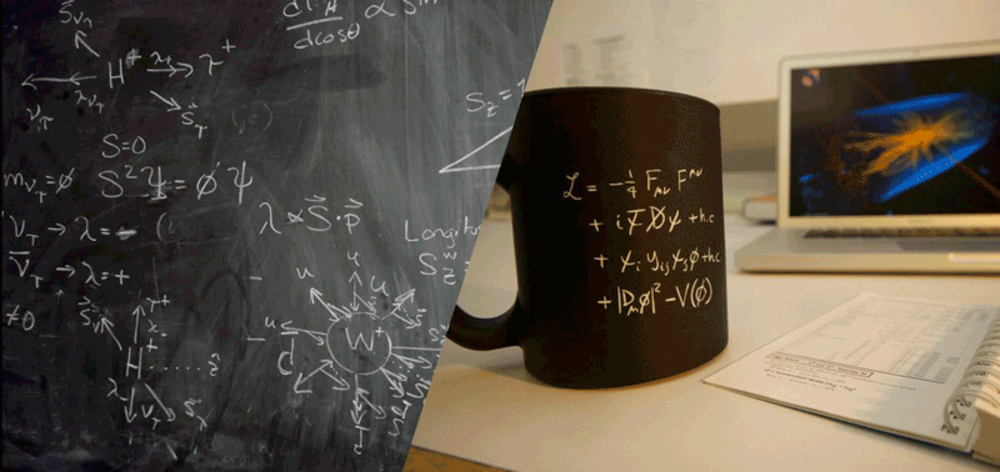The theory group at HEPHY is tasked with developing models, theoretical frameworks, and mathematical and computational tools to understand nature’s constituents and interactions at the most fundamental level. Our research activities involves both, the investigation of the dynamics of known constituents, as well as exploratory studies of new physics beyond the “Standard Model” of particle physics.
With the discovery of the Higgs particle, we have recently made significant advances in our understanding of the origin of mass for fundamental particles. Yet, the overwhelming contribution to the mass of matter that surrounds us in daily life—protons, neutrons, nuclei, atoms, molecules—comes in actuality from the inner workings of the theory that describes the strong interactions of quarks, Quantumchromodynamics (QCD). Theorists at the Institute develop mathematical descriptions of matter in a regime where QCD in its fundamental form is not accessible to direct calculations.
Another major line of research at HEPHY concerns a possibly in Nature realized symmetry, called Supersymmetry(SUSY). SUSY is a theory of new physics that, in essence, ascribes to each Standard Model particle a heavier partner state. SUSY has many theoretically appealing consequences and much of the experimental efforts at the Large Hadron Collider (LHC) aim toward finding these particles. Theorists at HEPHY are particularly engaged in identifying the phenomenologically relevant scenarios to be searched for at LHC and at future colliders.
Despite of our significant understanding into the origin of mass of ordinary matter, the matter-budget of the Universe as a whole remains a mystery. Astrophysical observations show that 85% of mass resides in a new particle (or multiple particles) that we collectively call Dark Matter. Understanding the microphysical nature of Dark Matter and how it interacts with the Standard Model is among the most pressing questions in particle physics today. Theorists at HEPHY formulate and investigate models of the “hidden sector” and work out their implications for future experiments or confront their predictions with existing searches.
